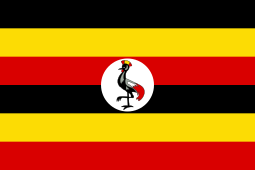

The ongoing visit of Vice President of India Mr Hamid Ansari to Rwanda & Uganda is part of the conscious broadening of India’s diplomatic footprint in Sub-Saharan Africa, especially in the Great Lakes region. In Rwanda, Ansari launched India-Rwanda Innovation Growth Programme as part of which there would be a technology expo of India’s low-cost innovations. President of Rwanda Paul Kagame had earlier attended the Vibrant Gujarat Global Summit in January. During his visit to Uganda from February 21-23, the Vice President met his counterpart and the President of Uganda. Relations between India and Uganda are characterised by historical cultural linkages, extensive economic and trade interest and a convergence on major bilateral and international issues. The visit is expected to deepen and expand the bilateral relationships. The visit of the Vice-President is part of the conscious broadening of India’s diplomatic footprint in Sub-Saharan Africa, especially in the Great Lakes region.
India and African continent’s relations are marked by cordiality, convergence of views and cooperation on major international issues, increasing bilateral trade and investments, greater people-to-people contact and a deep sense of mutual respect . Crucially, they have the potential to do much more business with one another. But while greater integration between India and the African continent presents mutually beneficial opportunities, it won’t be without challenges.
Africa enjoys strong economic relationships with traditional partners like the EU. China is fast becoming one of the region’s main investors as well – alongside the US, China is currently Africa’s second largest trade partner. Meanwhile, India’s trade role in Africa has grown at a steady – albeit lesser – pace. The Indian government’s financial resources are not as large as China’s. It is Indian private investors who tend to be leading and financing the country’s activities in Africa.
African and Indian consumers have similar levels of income and, consequently, compatible quality requirements. This opens a trade opportunity for Indian firms that would fail to make their mark in developed countries. India shares certain cultural and institutional similarities – such as language and institutions based on a common colonial past, particularly in Great Lake Region which saw Indians coming to build their railways under the British rule & later, the influx of Gujarati traders; only to be disrupted for time being during the rule of Idi Amin in the early seventies. This facilitates investment in areas where other foreign investors would be dissuaded. Being in close time zones, fluent in English and having similar legal systems are all advantages in the provision of business, legal and telecommunications services. This also allows Indian services providers to expand and diversify both destinations and type of services.
Through greater ties with India, African firms will have access to a gigantic market whose consumers have similar level of income. Again, this is a chance to specialise in products with similar quality standards. Rwanda & Uganda can also benefit from the large pool of skills India offers: engineers, managers and other professionals are available at a short travel distance to provide essential services and help build their professional capacity. Experience with similar challenges (such as poor infrastructure), which require the ability to operate with scarce resources, can facilitate the exchange.
Making the necessary policy changes for stronger trading relationships is a major challenge. Ensuring free temporary movement of people in the provision of services would allow skilled Indian professionals to transfer their skills; this will be achieved through easing out the visa formalities & establishment of resident mission in Rwanda as planned. Duty free access to each other’s market will be essential for African and Indian exporters. India-Africa relationship is growing stronger and governments are signalling their intention to institutionalise this further. But to deliver real benefits for people in two of the world’s poorest regions, they need to put the right policies in place to back up their good intentions.